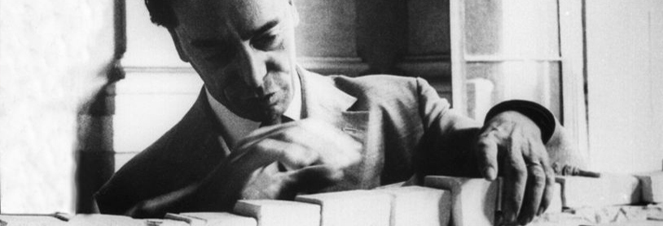AAPG Association Archivio Piero Gazzola
What was once the home and studio of Piero Gazzola is located in the hamlet of San Ciriaco di Negrar (Verona, Italy). Here resides the collection of documents he produced throughout the decades of his prolific work as architect, superintendent, and historian.
The collection of written material, designs, photographs, and publications form an out-and-out archive dedicated to the themes of architectural and urban renovation, the history of art and architecture, and in more general terms to the conservation of towns and cities’ historic districts and landscapes from the ‘40s through to the ‘70s. This is all crowned by the remarkable collection of volumes that form Gazzola’s own personal library.
Piero Gazzola graduated in Architecture at the Polytechnic University of Milan, and later in Literature at the city’s “Statale” University. After a brief period of time spent in Sicily, he went on during the harrowing years of the Second World War to hold the position of Superintendent of Monuments in the western part of the Veneto region (the provinces of Verona, Mantova, and Cremona), an area of the highest historical and cultural significance.
It was in this context that his work extended beyond the urban environment and onto a territorial scale. Here he began working towards protecting landscapes with legal consultancy and hands-on control of construction in urban centres and the conservation of landscapes, particularly in and around Verona.
After having held the role of Superintendent in Milan on an ad interim basis, he began lecturing at the Faculty of Architecture of the Polytechnic University.From the 1950s onwards he was a protagonist in some of the most influential postwar debate as an expert in the conservation of monuments at UNESCO, in Paris. During that time he worked on some of the most internationally high profile archaeological sites and monuments, including the salvage of the Nubian temples under threat from the Aswan Dam. Additionally, he was the principal proposer and organiser of the Venice Congress of 1964, which saw the drafting of the International Restoration Charter, better known as the Venice Charter, and the founding of ICOMOS, the organization he created and of which he was the first Chairman.
Gazzola did not limit himself to performing simple official duties as a functionary; in the cause for conservation he managed to bring together the most vital elements of society and gave life to a series of associations, including the Istituto Italiano dei Castelli (Italian Castle Institute), still operating to this day.
In 2008, a first round of studies into Piero Gazzola’s archive and other accounts of his work lead to an international conference: “Piero Gazzola. Una strategia per i beni archittetonici nel secondo Novecento” (A Strategy for Architectural Heritage in the Second Half of the 20th Century). The conference, organized to mark the centenary of Gazzola’s birth, was promoted by the Veneto region and the Castelvecchio Museum in Verona, and was coordinated by a scientific committee headed by Paola Marini. The conference sparked lively interest within the industry, due both to its technical accuracy and to the quantity and extent of contributions raised by its accompanying publication: Piero Gazzola: una strategia per i beni architettonici nel secondo Novecento, by A. Di Lieto and M. Morgante, Cierre Verona (2009).
On this occasion - as in years gone by - the archive was opened to scholars and researchers working on graduation theses. However, in 2007, the new interest raised encouraged Gazzola’s heirs to create the Associazione Archivio Piero Gazzola (Piero Gazzola Archive Association), a nonprofit organization with the objective of promoting and supervising initiatives regarding the archive as well as the profile of the former superintendent. The honorary committee and representatives - all active partners in historical-academic work - include such distinguished members as Gustav Araoz, Chairman of ICOMOS (Conseil International des Monuments et des Sites) and Francesco Bandarin, UNESCO’s ex Assistant Director-General for Culture, Tomaso Montanari historian of Art and Professor at the Università degli studi di Napoli Federico II.
The Association seeks to meet its objectives through activities designed to safeguard the integrity, conservation and accessibility of the archive and the library; to promote cataloguing and inventorying so as to facilitate the use of its heritage; to document and share the work of Piero Gazzola via publications, exhibitions, and conferences.
In 2010, in accordance with article 15 of legislative decree n. 42/2004, the Soprintendenza Archivistica del Veneto (Documentation Superintendence group of the Veneto region) officially declared the entire collection of documents to be of “particularly important historical significance”. This acknowledgement helped to kickstart an important project - by Soprintendenza in cooperation with the Association, and with financing from the Cariverona Foundation - of filing, cataloguing and partial computerization of the material; an essential act for the conservation and furthering of study and research.

